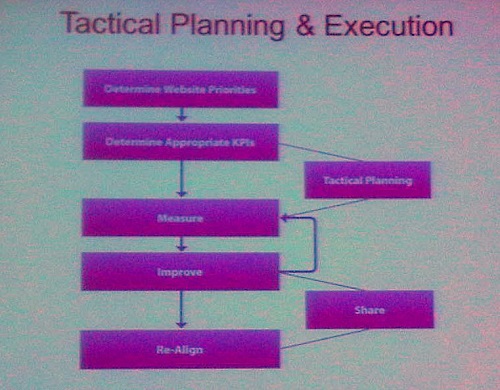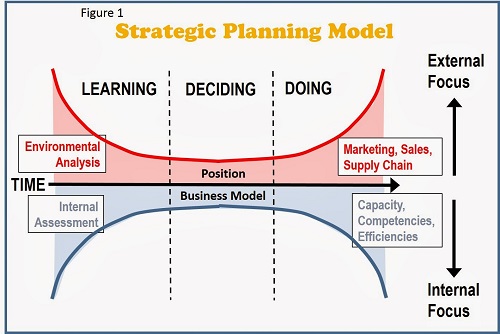Difference Between Tactical and Strategic
People have been using the terms strategy and tactics interchangeable without sufficient knowledge that these terms mean something different from one another. Some of the growing organizations cannot differentiate between strategies and tactics because they do not have the structures and frameworks they can rely on to find the difference. For the two terms to work in tandem with one another in your organization, one must clearly between distinguish them.
-
What is a Tactic?
A tactic is a framework or a model that is used in various sectors like businesses, military, and governments to achieve as a specific goal. A tactic entails actions that are geared towards helping the system to accomplish specific tasks.
-
What is a Strategy?
The term strategy is used to describe a high-level plan of actions that is formulated to assist in the achievement of specific targets under conditions of uncertainty. It is worth noting that a strategy has a model set out to implement specific actions and tactics with an attempt of achieving the goals despite the future being uncertain or unknown.
Difference Between Tactical and Strategic
- Role and Purpose
One of the main purposes of the strategy and the strategy formulators is understanding the broader goals of the organization while at the same time organizing the source of the resources that can be used to achieve those goals. Individuals who are involved in strategy have the role of influencing resources with a high-level understanding of how tactics can be combined to achieve specific goals. On the other hand, tactics involve the ability to utilize the resources provided to achieve specific units of the main goal of the organization. People in the tactical area know about using the limited resources supplied by the strategists to accomplish the set goals.
- Operation Time
Strategies are formulated to such an extent that they guide the organization to achieve its mission and vision which are set in unforeseeable future. This means that strategies work and can last for a longer period unless they are altered by the management of the organization which is not a frequent affair. This is not the same for tactics which are set out to achieve specific goals within a specified period which is short to medium term. Tactics are very flexible and keep on changing concerning the market conditions. Tactics will always be altered to help the organization adjust to the changes in demand for goods and services or adjust to changes in prices.
- Accountability
Given that people at both strategy formulation and tactical implementation levels have their roles to play concerning the development of the organization, each player is responsible and accountable for his or her actions. People at strategy level, who are mostly the managers and directors of the organization, are held responsible for the overall health of the organization. On the other hand, people who implement tactics, who are the supervisors and line managers, are held accountable to specific resources assigned to them or even the failure to achieve the set goals and objectives.
- Methodology
Given that the strategy formulation is a critical aspect in the overall health and performance of the organization, people who formulate the strategies need to be highly qualified with hands-on experience in dealing with certain situations before drawing a specific direction that the company will follow. Strategy formulation entails significant levels of experience, knowledge in primary and secondary research, analysis of the prevailing market condition, critical thinking, and excellent communication skills so that one can communicate the strategies that the organization will follow to achieve its goals and objectives. On the other hand, people involved in achieving the sub-goals possess a different kind of expertise in planning, processes, best practices, and team management.
- Scope of the strategic and tactical team
The team involved in strategy has a different scope as compared to the team involved in the tactical department. The scope of the strategic team include the resources of the organization and the scope of analyzing the external environment of the organization that includes prevailing market conditions, government policies, changing customer preferences, industrial competitors, and the overall trends in economic conditions. However, the tactical team has a limited scope of managing the resources provided by the strategy department to achieve specific goals only. It is worth noting that tactical team receives instructions from the strategy team.
- Results/Output
Lastly, both strategies and tactics provide different results. Some of the expected results from the strategic department include the clear path of the organization which includes the organizational goals, organizational plans, guidelines on how to achieve specific goals, and the key methods that will be used to measure the performance of the organization. The output of the tactical department is slightly different because it produces clear deliverables and outputs using people, tools, and time.
A Table Summarizing the Differences Between Tactical and Strategy
| Strategy | Tactics |
| Understanding the broader goals of the organization | Role of achieving specific units that together make the overall goal of the company |
| Strategies operates for a longer duration | Operates for short to medium time and are flexible |
| Accountable for overall performance of the organization | Accountable for the resources provided by the management of the company |
| Uses experience, research, and analysis to formulate strategies | Uses planning, processes, best practices, and team management to achieve the set goals |
| Responsible for resources and external environment | Responsible for the resources provided by the strategic department |
| Produces organizational goals and maps | Produces deliverables using people and time |
Summary
- These two must work in harmony, without it your business cannot efficiently achieve objects. If you have a policy without tactics, you have prominent masterminds and no progress.
- If you have tactics without craft, you have the disorder.
- Conclusively, an excellent way to think about the disparity between the two is that plan acts as a director to a set of actions that various departments or teams will undertake.
- Difference Between Gross NPA and Net NPA - April 20, 2018
- Difference Between Job Description and Job Specification - April 13, 2018
- Difference Between Yoga and Power Yoga - April 10, 2018
Search DifferenceBetween.net :
Leave a Response
References :
[0]Donner, Debbie. "5 Major Differences Between Tactical and Strategic Intelligence." (n.d.).
[1]Yochum, Catherine. "Strategy Vs. Tactics: The Main Difference & How to Track Progress Of Both." (2016).
[2]"Image Credit: https://www.flickr.com/photos/bruceclay/4906234928"
[3]"Image Credit: http://planninga-from-nanninga.blogspot.in/2013_11_01_archive.html"


